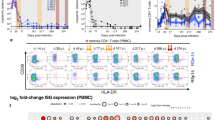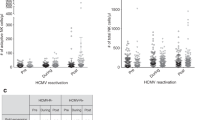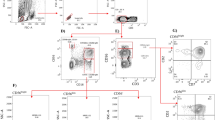Abstract
ABSTRACT: In infants born to mothers infected with the human immunodeficiency virus (HIV), antibody-dependent cellular Cytotoxicity (ADCC) or natural killer Cytotoxicity (NKC) may either eliminate infection or ameliorate its course. We developed and standardized an assay for cytotoxicity of HIV-infected cells and studied the capacity of leukocytes from healthy neonates and adults to lyse HIV-infected cells by ADCC and NKC. The chosen target cell line, a T cell line infected with the HXB-2 clone of human T-cell lymphotrophic virus-IIIB, displayed stable surface expression of viral antigens over months of continuous culture and allowed simultaneous assessment of NKC and ADCC of effector cell populations. Conditions for optimal ADCC lysis of target cells were defined for unpurified peripheral blood mononuclear cells and purified lymphocytes and monocytes. Polymorphonuclear neutrophils from healthy adults and neonates exhibited low activity in ADCC of HIV-infected targets. Lymphocytes and monocytes from adults were found to differ in antibody dependence, kinetics, and sensitivity to latex inhibition for ADCC-mediated lysis of HIV-infected targets. Peripheral blood mononuclear cells of healthy neonates and adults displayed equivalent capacity to mediate NKC of HIV-infected targets. However, neonates' peripheral blood mononuclear cells were found to be significantly less active than adults' in ADCC lysis of HIV-infected cells. This pattern of diminished ADCC Cytotoxicity with intact NKC is the opposite of that seen in HIV-infected adults. Our findings suggest that therapies designed to enhance ADCC effector cell function in the neonate may help interrupt vertical transmission of HIV.
Similar content being viewed by others
Article PDF
Author information
Authors and Affiliations
Rights and permissions
About this article
Cite this article
Jenkins, M., Mills, J. & Kohl, S. Natural Killer Cytotoxicity and Antibody-Dependent Cellular Cytotoxicity of Human Immunodeficiency Virus–Infected Cells by Leukocytes from Human Neonates and Adults. Pediatr Res 33, 469–474 (1993). https://doi.org/10.1203/00006450-199305000-00010
Received:
Accepted:
Issue Date:
DOI: https://doi.org/10.1203/00006450-199305000-00010
This article is cited by
-
The impact of differential antiviral immunity in children and adults
Nature Reviews Immunology (2012)
-
Does IVIg administration yield improved immune function in very premature neonates?
Journal of Perinatology (2010)



